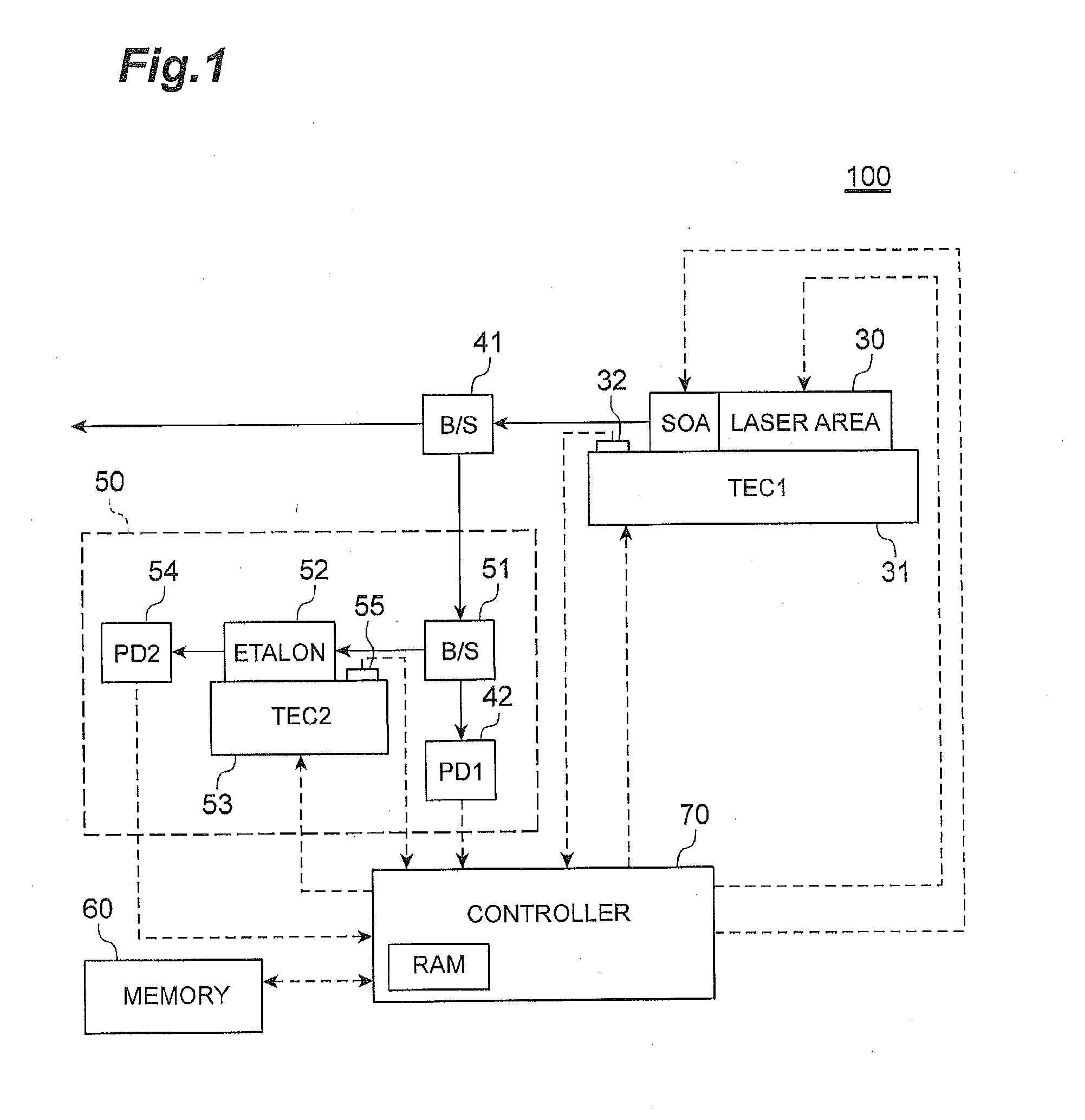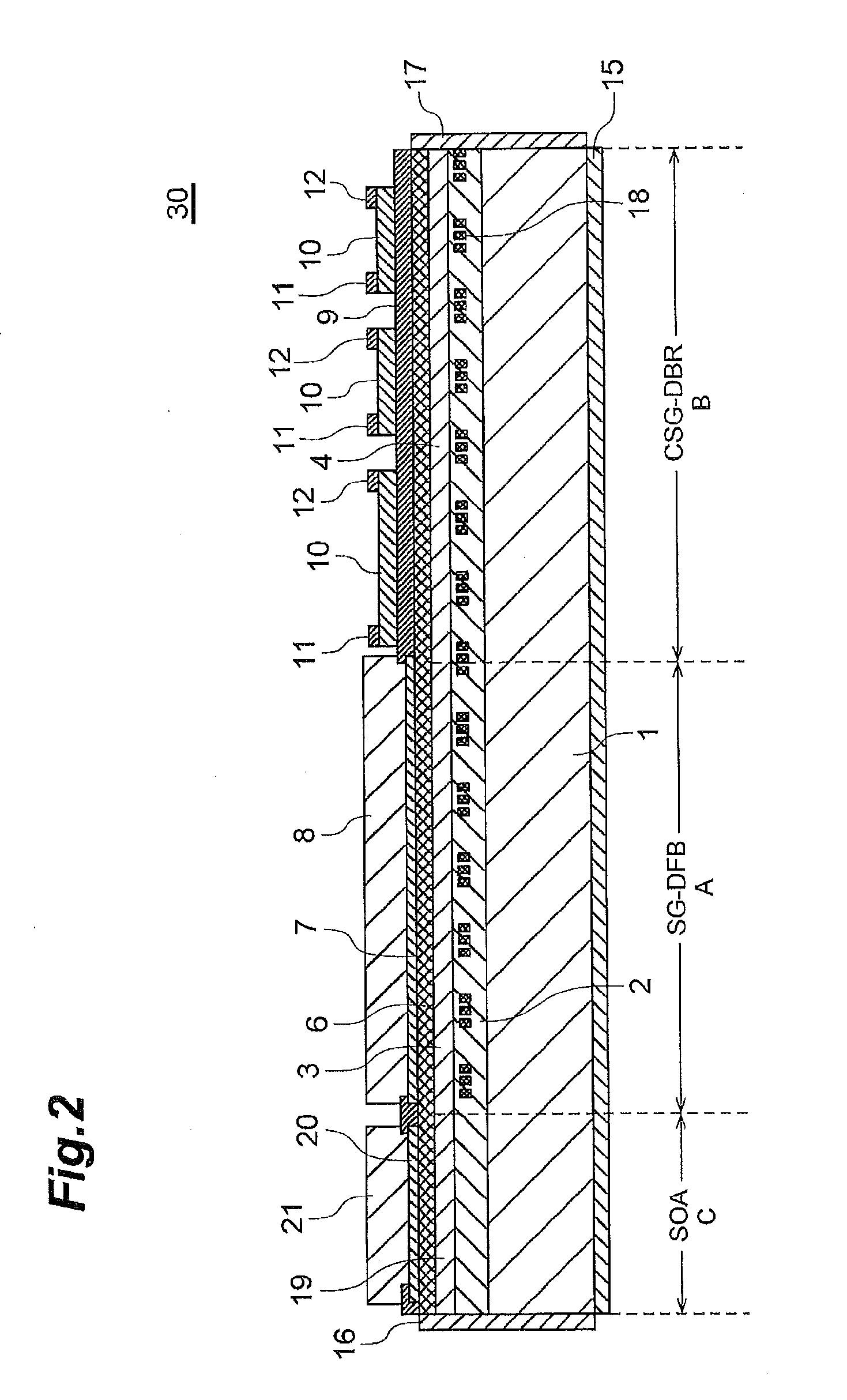Method for controlling tunable wavelength laser
- Summary
- Abstract
- Description
- Claims
- Application Information
AI Technical Summary
Benefits of technology
Problems solved by technology
Method used
Image
Examples
first embodiment
[0023]Hereinafter, embodiments of the present invention will be described with reference to the accompanying drawings.
[0024]FIG. 1 is a block diagram illustrating an overall configuration of a tunable wavelength laser 100 according to a first embodiment. As illustrated in FIG. 1, the tunable wavelength laser 100 includes a semiconductor laser 30, the wavelength of which can be controlled (tunable semiconductor laser), as a laser device. The semiconductor laser 30 according to the present embodiment is provided with an area, which is connected to a laser area and becomes a SOA (Semiconductor Optical Amplifier). The SOA functions as an optical output control unit. The SOA can increase / decrease the intensity of optical output as desired. The SOA can also control the intensity of optical output to be substantially zero. The tunable wavelength laser 100 includes a sensing unit 50, a memory 60, a controller 70, and the like. The sensing unit 50 functions as an output sensing unit and a wa...
second embodiment
[0069]In the case of the tunable wavelength laser 100 according to the first embodiment, the required wavelength setting value of FIG. 6 is written in the memory 60 when the required wavelength is implemented, but the present invention is not limited thereto. For example, a correction amount ΔT may be associated with the corresponding required wavelength and written in the memory 60. The correction amount ΔT is an amount of correction of the temperature value of the semiconductor laser 30 when the required wavelength is implemented under stable AFC control. In addition, the correction amount ΔT is a value satisfying TLD=TLD′+ΔT when a temperature value TLD under stable AFC control is TLD, and the temperature value TLD of the update setting value is TLD′. FIG. 11 is a diagram illustrating the correction amount ΔT written in the memory 60.
[0070]The controller 70 according to the present embodiment calculates the update setting value based on the wavelength difference ΔF. Next, the con...
PUM
 Login to View More
Login to View More Abstract
Description
Claims
Application Information
 Login to View More
Login to View More - R&D
- Intellectual Property
- Life Sciences
- Materials
- Tech Scout
- Unparalleled Data Quality
- Higher Quality Content
- 60% Fewer Hallucinations
Browse by: Latest US Patents, China's latest patents, Technical Efficacy Thesaurus, Application Domain, Technology Topic, Popular Technical Reports.
© 2025 PatSnap. All rights reserved.Legal|Privacy policy|Modern Slavery Act Transparency Statement|Sitemap|About US| Contact US: help@patsnap.com



